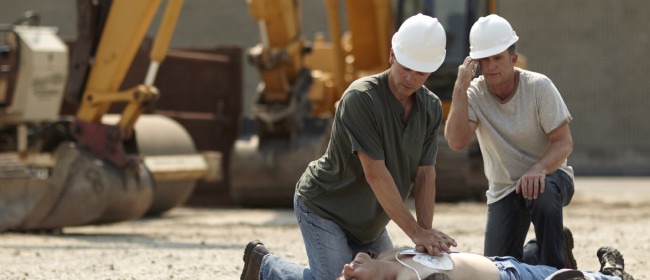According to the American Heart Association, more than 300,000 sudden cardiac arrests (SCA) occur annually in the United States and, according to OSHA, about 10,000 occur at work. Fortunately, companies that implement an automated external defibrillation program and have employees prepared to respond to an SCA increase the chance of survival.
Automated External Defibrillation Program are becoming more common in the workplace. Statics indicate approximately 10,000 deaths occur in the workplace due to sudden cardiac arrest. Here are five keys to an effective AED program in the workplace and to ensuring your devices will perform when needed.
- Championing: Have an internal champion to promote and educate your workers with these successful elements:
- Informational brochure that outlines your AED program
- Annual Review of your emergency response plan (including AED program)
- Recordkeeping/Device Tracking/Maintenance: Integrate your defibrillator maintenance program as part of the company maintenance schedule for other safety equipment and safety systems. Although most devices have warning signals to indicate when the device is not ready to use, an effective management tracking system can be used to record the expiration dates of your defibrillator consumables, such as batteries, and pads to ensure the unit will work when and if needed.
- AED Placement: OSHA offers a list of optimal places to consider when installing an AED:
- Areas that allow response within three to five minutes
- Areas where people work closely together, such as assembly lines and office buildings
- Areas close to confined space
- Areas where electrical-powered devices are used
- Outdoor worksites where lighting may occur
- Health units where workers may seek treatment for heart attack symptoms
- Company fitness units and cafeterias
- Any remote sites
- Training: Employees should be competently trained prior to using the AED equipment. The training should cover the following areas:
- How to recognize sudden cardiac arrest and how to activate the companies’ emergency response plan, including location of AEDs and activation of the emergency medical services system
- How to arrive care until help arrives
- Sudden Cardiac Arrest Drills: Periodic drills should be conducted. Key drill elements should include:
- Pre-drill preparation, including notifying key personnel and preparing equipment
- Pre-exercise briefing
- Simulated Sudden Cardiac Arrest medical exercise, including appropriate response checklist
- Debriefing
- Additional exercises or CPR and AED practice for emergency response team members
The NARFA Team works hard to provide our members with relevant safety tips to decrease workplace events that could prove costly for your business. NARFA sponsors the Automotive Industries Compensation Corporation (AICC) workers compensation program in Massachusetts. The AICC has been recognized nationally for its strong performance every year. Benefits such as big up-front premium discounts, dividends paid out to members, free unlimited loss control services, and best in class administration keep the AICC retention rate at 99%.
Please contact us to learn more about the AICC and other NARFA programs such as health insurance providing your business with the best coverage from a leading national carrier. Join our power in numbers today!
Recent Posts
The U.S. Department of Labor Announces Proposed Rule To Protect Indoor, Outdoor Workers From Extreme Heat
The U.S. Department of Labor has proposed a new rule aimed at protecting workers from extreme heat hazards. This initiative seeks to safeguard approximately 36 [...]
Supreme Court Overturns Chevron Deference: What It Means for Workplace Safety and Regulation
The landscape of federal regulation is set for a seismic shift following a recent Supreme Court decision. On June 28, in Loper Bright Enterprises, et [...]
Navigating the Compliance Maze: How NARFA Simplifies Employee Benefits for Automotive and Trade Industries
In today's complex regulatory environment, businesses in the automotive, roads, fuel, and related industries face unprecedented challenges in managing employee benefits. Recent studies show that [...]




